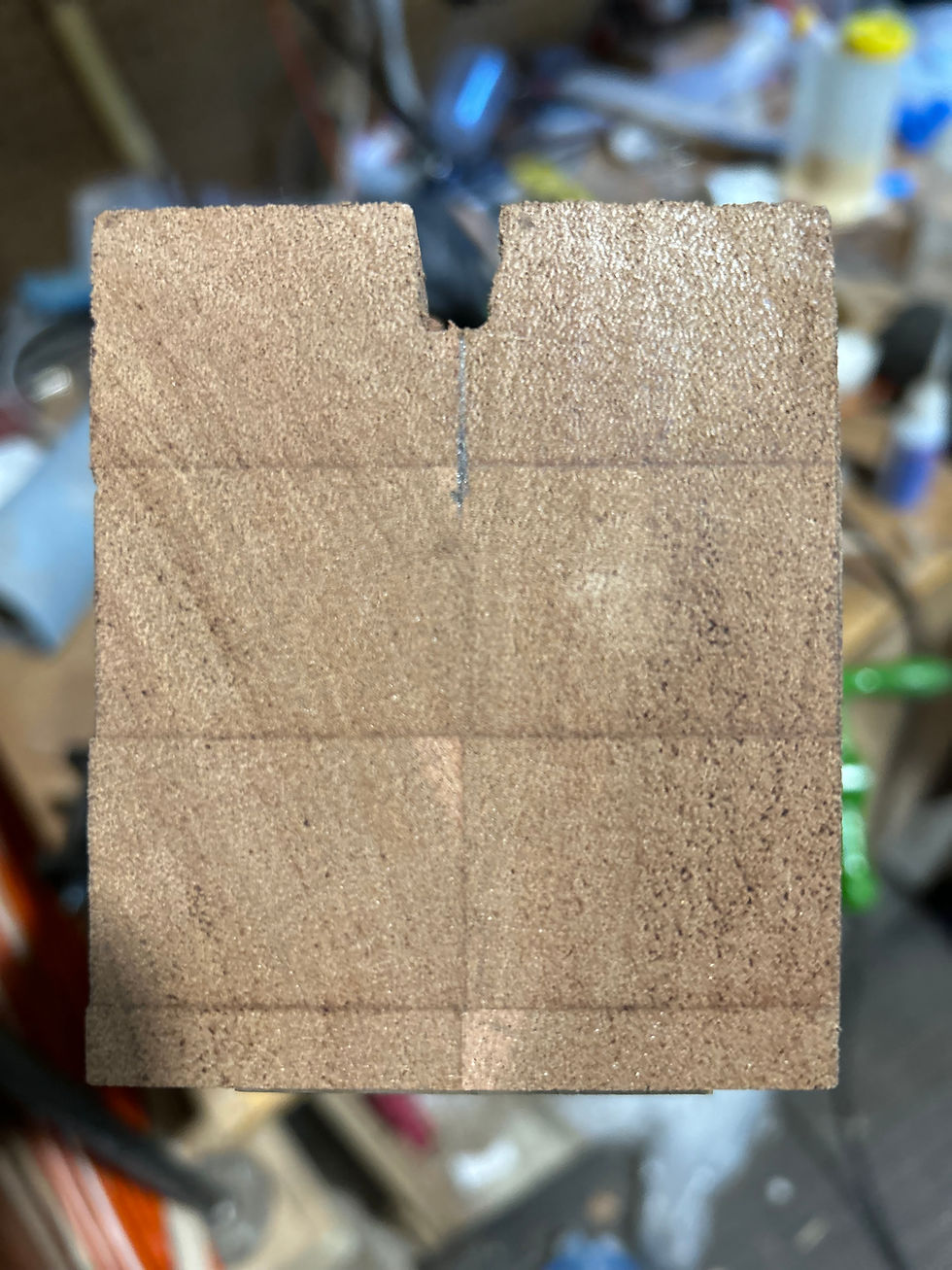Twenty-one pieces of wood in a neck
- David Schiff
- Jul 1
- 2 min read
Updated: Oct 8
There’s the fretboard, two pieces of binding, the heel cap and seven fret marker inlays. That’s eleven. You can easily see all of those. But the remaining 10 pieces in the neck I am currently working on might surprise you because to the casual eye, they'll look like one piece when finished

Let me explain. My friend Glen gave me a decades-old mahogany board that exhibits a deep rich brown color when finished. Mahogany is an ideal neck wood—it’s lightweight, so the guitar feels balanced and it’s very stable and unlikely to warp. Plus it’s easy to carve. The piece Glen gave me was long enough to make three necks.
Like many luthiers, I typically make my necks from a 1-inch-by-3-inch board. I cut off three short blocks. These are stacked and glued to one end of the neck to be carved into the heel. A piece is cut off the other end at a 15-degree angle, cut down to headstock thickness, and then flipped over and glued on to become the angled headstock. This approach has two advantages over making the neck from one piece of wood. First, there is a lot less waste. More importantly it makes the neck stronger. With a one-piece neck the grain running through the length of the board continues in the same direction when it reaches the headstock, but because the headstock is angled the grain no long runs straight through. The scarf joint avoids this problem. So, headstock, main body, three blocks—that’s five pieces of wood. How come 10?

Well, when I looked at the end of this board, I saw the grain was running mostly parallel to the wide faces. I realized that by ripping the board in half along its length and then turning the pieces 90 degrees to glue together two surfaces that had been one, the grain would now be running mostly perpendicular to the new wide faces. This matters because wood is strongest parallel to the grain and now the pull of the strings will be in that orientation. This enhances the neck’s strength in resisting bow from the string tension.
And since the grain in this board is not perfectly perpendicular I was careful to orient the grain angle in opposition directions in the two pieces. This will make the piece even more stable. So now, each of the aforementioned five neck parts is made of two pieces for a total of 10.

The piece Glen gave me was almost 2 inches thick, so I was able to get more than 3 inches of width when I cut and glued it. Often when I have a 1-inch thick blank that I want to rip in half I’ll sandwich in a stripe of contrasting wood to create the 3 inch width. Fifteen pieces!
It’s worth noting that a neck make of multiple lengths of wood is inherently stronger and more stable than a one-piece neck. Humidity changes cause wood to expand and contract along the grain and this can cause a single piece of wood to warp. Multiple pieces with different grain directions will help avoid warping. (It’s idea behind plywood.)



Comments